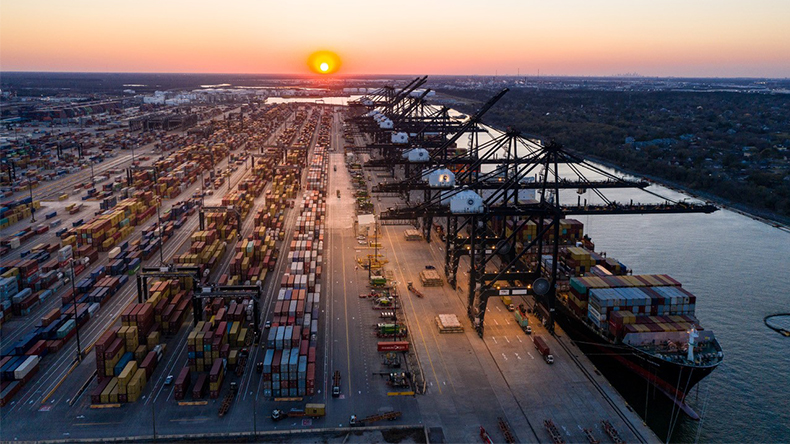Over one million twenty-foot equivalent import containers per year have shifted away from U.S. West Coast ports, with Gulf Coast ports being the biggest beneficiary, according to a new report by Descartes Systems Group.
Descartes analyzed the shift in U.S. import volumes since 2021 when West Coast container ports began experiencing historic congestion amid the pandemic-driven import surge. Now, growing uncertainty surrounding West Coast port labor negotiations is continuing to drive volumes east.
The report shows that Asian-based imports contributed the most to volume growth at Gulf Coast ports, with China being the most impactful, with over 68,127 TEUs gained. However, the report also indicates that a smaller shift away from Northern European container imports was occurring simultaneously.
Gulf Ports have seen an influx of goods such as electronics, furniture, and machinery, which are typically associated with Asian manufacturers.
“Shifts in container import volumes from West Coast ports are top of mind again with the protracted ILWU-PMA contract negotiations,” said Chris Jones, EVP Industry at Descartes. “Descartes’ Global Shipping Report provides insight into how much volume has shifted away from the West Coast ports, where it went, and what were the countries of origin and top commodities that left.”
Descartes analyzed U.S. container import volumes (TEUs) in the first three months of 2019 compared to the first three months of 2023 to gain insights into the shift away from West Coast ports. Overall, U.S. import container volumes are trending extremely close in the first three months of both years, allowing for a reasonable comparison.
Comparing the first quarter of 2023 to 2019, it is evident that there was a significant shift. According to the report, the West Coast’s container outflows are quite close to the East and Gulf Coasts container inflows. Descartes’s report extrapolated the Q1 data over 12 months to calculate that over one million TEU containers moved away from the West Coast ports annually starting in 2021.
The report noted this also considers March 2023’s significant reversal of the decline in volume that occurred at the Ports of Los Angeles and Long Beach.
East and Gulf Coast ports have generally outperformed West Coast ports in terms of growth rates for the last several years, amid a steady eastward shift of inbound cargo volumes that began with the expansion of the Panama Canal in late 2016. Over the last few years, this shift has been exacerbated by port congestion and now growing uncertainty surrounding negotiations between West Coast port employers and dockworker unions. With no end in sight to the labor talks, it’s anyone’s guess when or if West Coast ports will regain their share of imports lost during the pandemic.
“Changing trade lanes is not a trivial activity; however, the degree of volume shift that occurred in a short time frame during the pandemic is a testament to the ingenuity of logistics professionals,” Descartes said in its report. “As many factors, such as the pandemic and ILWU contract negotiations run their course, and improvements to ports and infrastructure reduce congestion, it will be interesting to see how much volume returns to the West Coast ports or remains elsewhere.”

